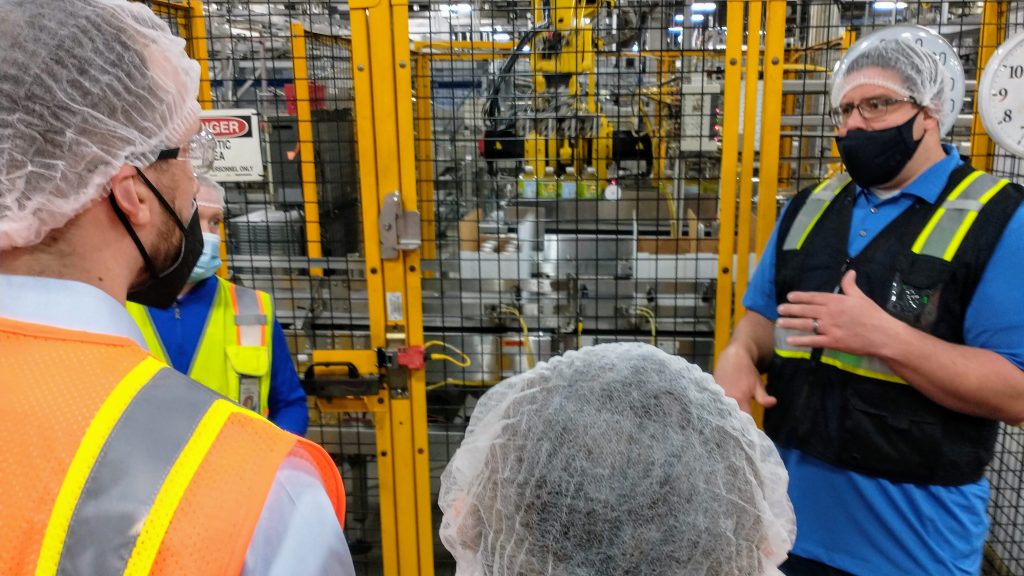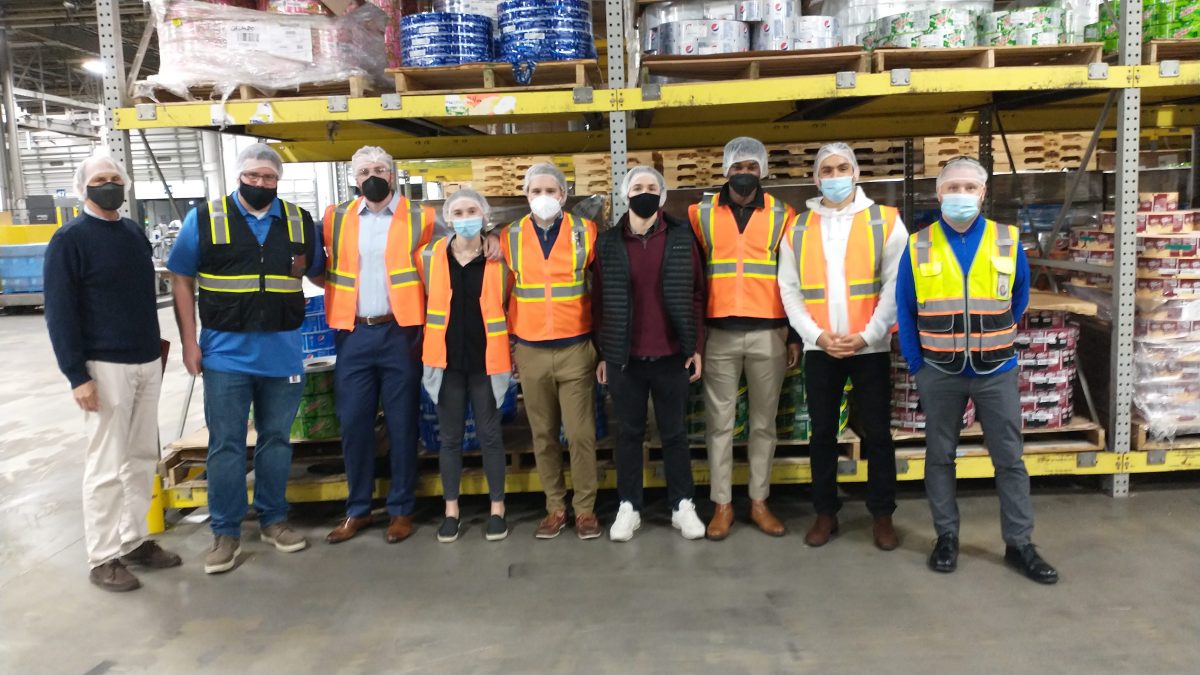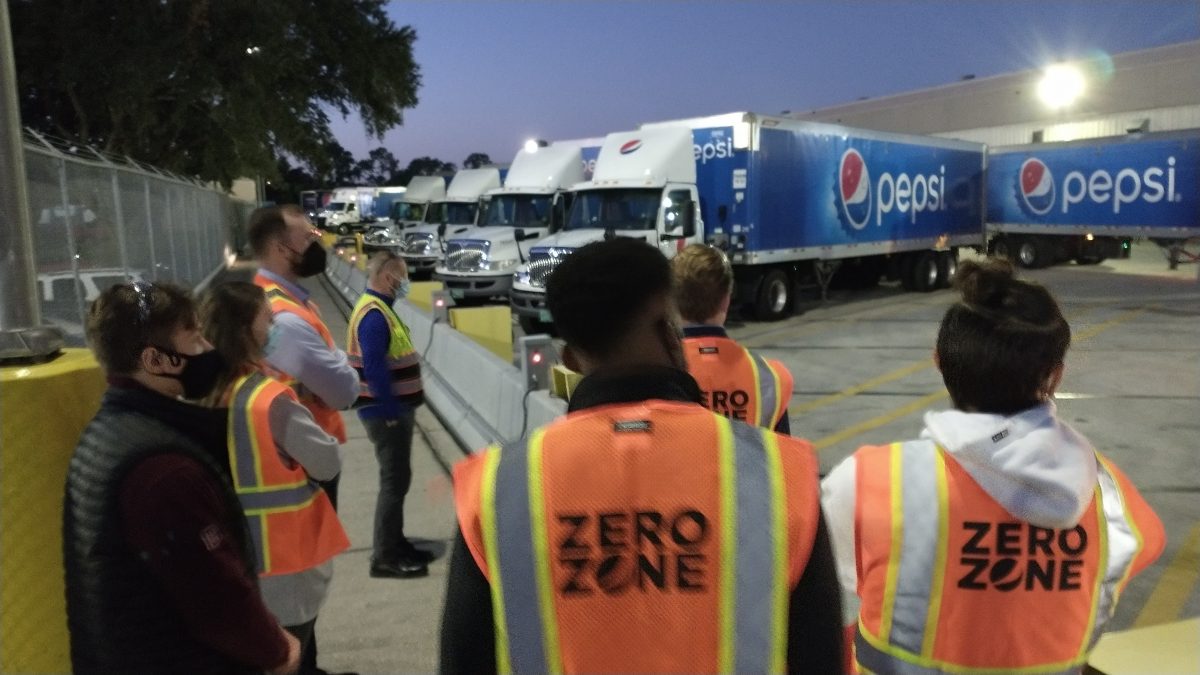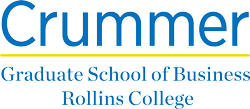Crummer Team Helps Evaluate Pepsi’s Regional Supply Chain Process

By Laura J. Cole ’04 ’08MLS
Supply chain issues reached their peak during the pandemic, stealing the spotlight in national and international media outlets. But finding efficiencies and making regular improvements to a company’s supply chain process is just part of the job for Mark Schwarz ’12MBA.
As director of warehouse automation at PepsiCo, he oversees distribution for the Fortune 500’s product portfolio in the South, which includes the District of Columbia, Maryland, and Virginia (DMV) market.
“We have a very robust flavor profile and service everything from large Walmart’s and Targets to bodegas, corner stores, and gas stations,” Schwarz says. “Some of the challenges that we see are unique because we sell and have so many skews and so many packages in our area, which provides a good opportunity for a graduate-level project to help look deeper into our processes and help evaluate what we’re doing.”

Schwarz knew he wanted to give back to Rollins, where he met his wife, and the best way he could think to do so is by providing impactful opportunities for students just like the ones he had as a graduate student.
Working with Michael Kazazis ’07MBA, director of business development and partner relations at Crummer, Schwarz was paired with a team of six students in the Integrative Capstone Experience program and faculty lead Kyle Meyer who were charged with finding more efficiencies in distributing products from warehouses to customers.
“I think a lot of time people don’t fully understand what supply chain looks like or what that entails,” Schwarz says. “PepsiCo being a Fortune 500 company and moving millions and millions of cases a day — that allowed the students to see behind the curtain of what a real supply chain issue looks like.”
Schwarz provided the team with a slew of raw data about the day-to-day operations and volume: How long are drivers spending in one location? How quickly are they moving items out of the warehouse? Who’s running which route and how long does it take?
It was up to the team to use that information to assess processes and recommend operational efficiencies.
EAMBA student Ziad Melhaoui, who served as the project lead, admits the data was overwhelming at first, especially because the team didn’t travel to Maryland, where the Pepsi team was located. The Crummer team was initially unfamiliar with the specific market area. Yes, they were meeting with Schwarz and members of the Pepsi team from the frontline to senior executives via Zoom. But they weren’t familiar with the routes drivers were taking or even the layout of the warehouse.
“You want the data to dictate where you go, but it doesn’t always provide the full picture,” Melhaoui says.
They needed the quantitative and the qualitative data to fully understand the issue. As part of their research, they interviewed fellow Crummer grad Paula Hopkins ’18DBA, who is senior sales director for strategy in PepsiCo’s Miami offices. They interviewed Crummer Professor of Operations Management Keenan Yoho, who is an expert on supply chain cost modeling and operations management. They interviewed competitors at Amazon to compare best practices in distribution. And they toured Pepsi’s distribution center in Orlando—the largest bottling and distribution plant in North America.
“The trip to the PepsiCo factory was not only super interesting, but also extremely informative as we began to sort of paint a picture and be able to have a reference point on our mind as to what’s actually going on behind the scenes,” said EAMBA student Christopher Jamison. “Beforehand, we would have our Zoom meetings, and they’re talking about shelfing and the way that the distribution works at the warehouse, and it’s just up to our imagination to fill in the gaps there. But going to the actual warehouse and seeing how large and sophisticated of an operation it is allowed us to fill in the gaps—and to speak with several people on the floor, including the drivers, and pick up on things that you are not able to virtually.”
One of those conversations was based around delivery assignments and morale. For example, they learned that when drivers arrive to a shift, their delivery assignments can make or break their day. If their routes are too spread out or scheduled during heavier traffic times, they may already know before their day begins that they’re set up to fail, which can impact their morale.
“It’s like a new coach told you that you need to run 30 miles in an hour,” Melhaoui said. “You know you’re never going to be able to do that. It was very revealing to us to hear that the morale is affected, and that goes into a negative spiral where you don’t complete it, and you come to work the next day desperate and defeated. The cycle just keeps repeating itself.”
The team signed non-disclosure agreements with Pepsi before the project began, so only limited details can be shared, but as part of their presentation they came up with a solution to boost morale that PepsiCo has already subsequently implemented.

Having companies implement the solutions presented by Crummer students is the ultimate goal behind the Integrative Capstone Experience (ICE) program, which allows students to choose between consulting with an external client such as PepsiCo, developing a NASA patent, or starting a new business.
“As part of their overall Crummer experience, students spend their entire second year involved in the hands-on program aimed at converting knowledge to wisdom,” said Kazazis. “These aren’t fluff assignments. All of them are projects we expect the organizations to implement.”
This year, in addition to PepsiCo, students who chose the external client consulting route were paired with AdventHealth, Finfrock, Give Kids the World, Junior Achievement, and Tijuana Flats.
“It’s an important part of our curriculum,” said Dr. Kyle Meyer. “For the students, they get to do some real work with real companies with real issues. It takes their learning beyond the abstract and what they’ve learned in the classroom to help real businesses solve real problems.”
For Schwarz, that experience mimics his own at Crummer and is exactly what he was hoping for—in addition to gaining new insights for his team.
“I think the one thing that was very nice and very helpful from the Crummer team is the tools we got,” he says. “At Pepsi, we’re very detail-oriented, but also very scalable. The Crummer team provided us with files and tools that we can use not only here in the specific market, but also that we can easily send to our teams in South Florida or California. No problem.”
For the students, it was a chance to work with a big-name company, gain valuable experience—and boost their confidence.
“I was really excited that we got to work with Pepsi,” said Jamison. “It was overwhelming at first, but as we began to dig deeper, we saw the impact that we could have on the company and how much they valued our perspective. We learned that they hired us because they needed someone to take a look at what was happening who didn’t live it every day. We found a solution that will hopefully have a large impact on their bottom line, so it was very beneficial for all of us.”

